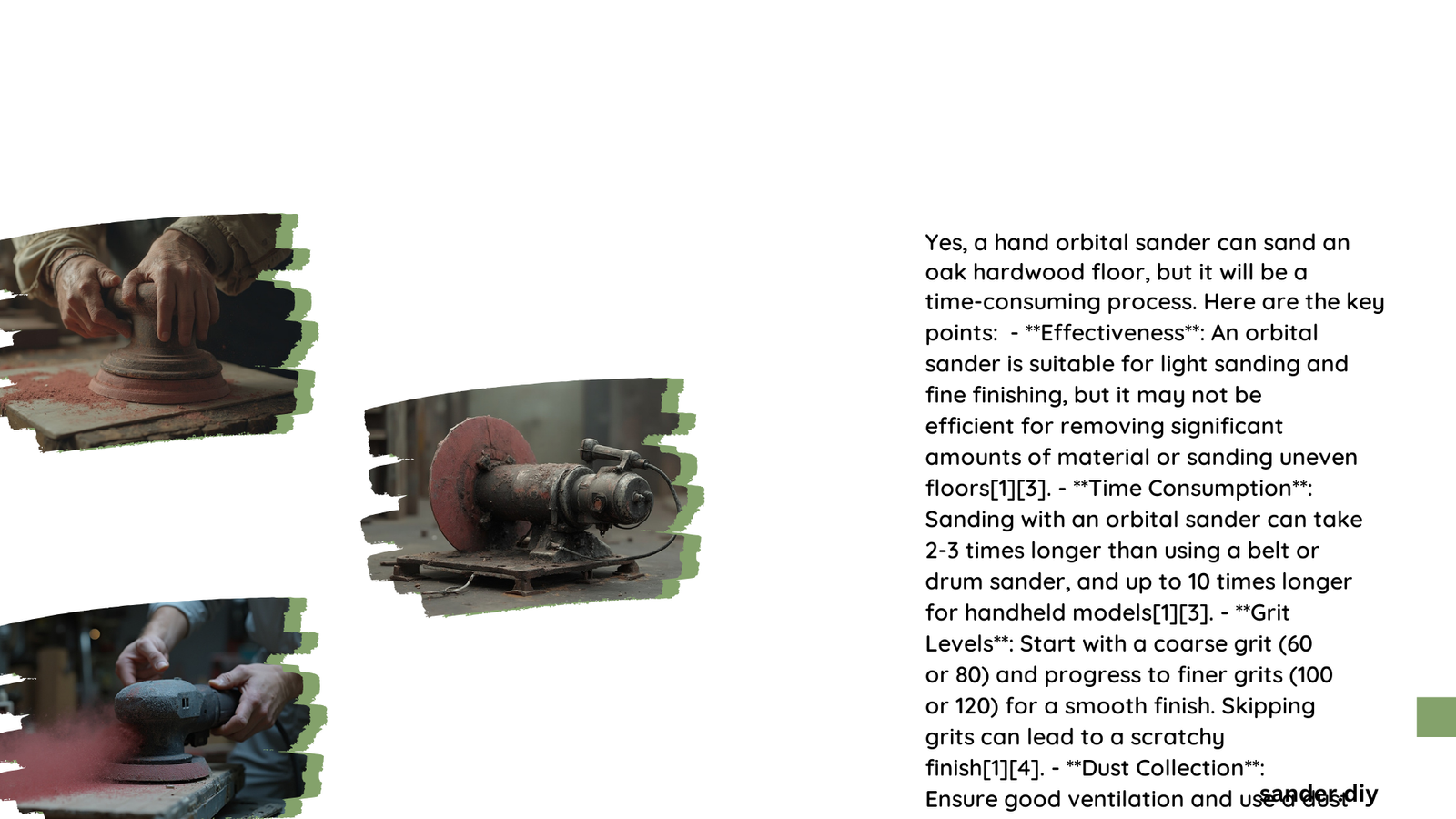A hand orbital sander can effectively sand an oak hardwood floor, but it requires patience and proper technique. While not as efficient as larger floor sanders, orbital sanders offer precision and control for smaller areas or DIY enthusiasts. The process involves using various grit sizes, multiple passes, and careful attention to detail. This method can be time-consuming but allows for a smooth finish on oak hardwood floors when done correctly.
What Are the Key Considerations for Using a Hand Orbital Sander on Oak Floors?
When considering using a hand orbital sander on oak hardwood floors, several factors come into play:
- Grit Selection: Start with coarse grits (60-80) and progress to finer grits (100-120).
- Sanding Technique: Maintain consistent pressure and movement to avoid uneven sanding.
- Time Investment: Expect to spend more time compared to using larger floor sanders.
- Dust Management: Use a dust collection system or vacuum frequently to minimize airborne particles.
How Effective Is a Hand Orbital Sander for Oak Hardwood Floors?

The effectiveness of a hand orbital sander on oak hardwood floors depends on several factors:
- Floor Condition: Works well for light refinishing but may struggle with deep scratches or severe damage.
- Sander Power: More powerful models (3.0 amp or higher) tend to be more effective.
- User Skill: Proper technique significantly impacts the final result.
Here’s a breakdown of effectiveness based on floor condition:
| Floor Condition | Effectiveness | Time Required |
|---|---|---|
| Light Wear | High | Moderate |
| Medium Wear | Moderate | High |
| Heavy Wear | Low | Very High |
What Grit Sizes Should Be Used for Oak Hardwood Floors?
Proper grit progression is crucial for achieving a smooth finish on oak hardwood floors:
- Start with 60-80 grit for initial sanding and removing old finishes.
- Progress to 100-120 grit for smoothing.
- Finish with 150-180 grit for a fine, smooth surface.
Important: Never skip more than one grit size to avoid leaving visible scratches.
What Are the Best Hand Orbital Sander Models for Oak Floors?
Several hand orbital sander models are suitable for oak hardwood floors:
- DeWalt D26451K Random Orbit Sander
- 3.0 amp motor
- Weight: 3.9 lbs
-
Dust collection system
-
Festool Rotex 150
- 720-watt motor
- Weight: 5.5 lbs
-
Dual-mode operation (random orbital and geared orbital)
-
Bosch 1250DEVS Random Orbit Sander
- 6.5 amp motor
- Weight: 5.3 lbs
- Dual-mode sanding
How Long Does It Take to Sand Oak Floors with a Hand Orbital Sander?
The time required to sand oak floors with a hand orbital sander varies based on several factors:
- Room Size: A 200 sq ft room may take 3-4 hours or more.
- Floor Condition: Heavily worn floors require more time.
- Grit Progression: Multiple passes with different grits increase overall time.
Tip: For larger areas, consider renting a larger floor sander to save time.
What Are the Common Challenges When Using a Hand Orbital Sander on Oak Floors?
Using a hand orbital sander on oak floors can present several challenges:
- Swirl Marks:
- Cause: Pausing the sander while it’s running or using worn sandpaper.
-
Solution: Keep the sander moving and change sandpaper frequently.
-
Uneven Sanding:
- Cause: Inconsistent pressure or movement.
-
Solution: Maintain steady pressure and methodical coverage of the floor.
-
Dust Management:
- Cause: Inadequate dust collection.
-
Solution: Use a dust collection system and vacuum frequently.
-
Edge Sanding:
- Cause: Difficulty reaching corners and edges.
- Solution: Use a detail sander or hand-sand these areas.
What Safety Precautions Should Be Taken When Sanding Oak Floors?
Safety is paramount when sanding oak hardwood floors:
- Wear a respirator, not just a dust mask, to protect against fine wood particles.
- Use safety goggles to protect your eyes from dust and debris.
- Wear ear protection to guard against the noise of the sander.
- Ensure proper ventilation in the work area.
- Disconnect power when changing sandpaper or performing maintenance.
What Are the Costs Associated with Using a Hand Orbital Sander on Oak Floors?
The costs of using a hand orbital sander on oak floors include:
- Sandpaper:
- High-quality sandpaper packs: $20-$50
-
Multiple grits needed: 60, 80, 100, 120, 150
-
Sander Rental (if not owned):
-
Daily rental fee: $20-$50
-
Additional Supplies:
- Dust masks or respirator: $20-$50
- Safety goggles: $10-$30
- Ear protection: $10-$30
Note: Owning a sander can be more cost-effective for multiple projects.
How Does Hand Orbital Sanding Compare to Professional Floor Sanding?
Hand orbital sanding and professional floor sanding have distinct differences:
| Aspect | Hand Orbital Sanding | Professional Floor Sanding |
|---|---|---|
| Time Required | Longer | Shorter |
| Cost | Lower | Higher |
| Skill Required | Moderate | High |
| Results | Good (with patience) | Excellent |
| Equipment Size | Small, portable | Large, specialized |
| Dust Management | Moderate | Excellent |
Hand orbital sanding is suitable for DIY enthusiasts or small areas, while professional sanding is ideal for large spaces or when time is a constraint.
In conclusion, a hand orbital sander can effectively sand an oak hardwood floor, but it requires time, patience, and proper technique. For best results, consider the floor’s condition, use appropriate grit progression, and follow safety precautions. While it may not be as efficient as professional equipment, it offers a cost-effective solution for smaller areas or DIY projects.
References:
1. Can You Use an Orbital Sander On Hardwood Floors (How to!)
2. How to Sand Hardwood Floors by Hand
3. Sanding Hardwood Floors by Hand
